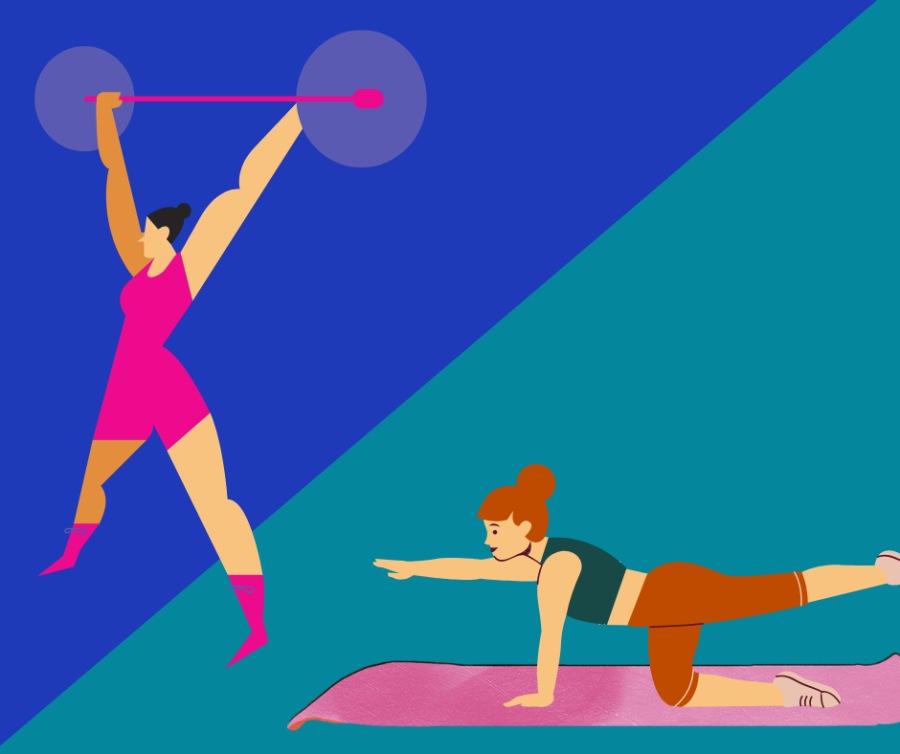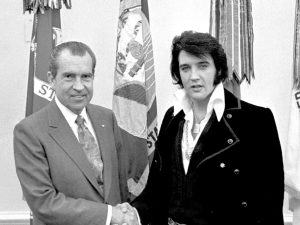Pump the iron or practice Pilates
February 22, 2023
By this point, I am sure that you have seen the boom of the Pilates industry on any form of social media. Whether it be your favorite TikTok influencer or your neighborhood workout fanatic, people are buzzing about the benefits of Pilates. This poses the question: Are people out with traditional strength training and in with Pilates?
I have spent the past year learning how to use and move my body in ways that I never have before. During this process, I became an avid strength trainer, runner and I dabbled in Pilates and yoga for recovery workouts. Through this journey of self-discovery and pushing my body to extreme lengths, I have heard more and more of the people I look up to within the fitness community drop the weights and transition to Pilates. Maybe it is time for a change.
Pilates was originally created by Joseph Pilates and has now blossomed into a group of low-impact workouts. Pilates can be described as a series of movements performed on a mat or chair that aids in growing strength, stability and flexibility. Pilates works in strengthening your muscles stemming from your core and spine, helping to support mobility and stability within the person completing these workouts. Many of the movements done within a Pilates class can be recognizable to those who have never taken a workout class. In the tonal.com article, “How Does Pilates Compare to Strength Training?” by Karen lorio Adelson, the author shares some of the familiar exercises one might experience in a Pilates class.
“Even if you’ve never taken a Pilates class, you might recognize certain moves—like lunges, planks, and core work—from yoga, physical therapy, or the warmups and cooldowns in your strength training workouts. That’s because Pilates improves flexibility and range of motion, both of which are beneficial for all types of fitness goals.”
Pilates is used to improve range of motion and flexibility, which can contribute to any type of workout.
The methodology behind Pilates is to focus on the eccentric, or lowering phase, of movement, in which your muscles are lengthened. The time under tension within each workout is longer in comparison to traditional strength training, where a person will only be in motion for a matter of minutes. Because of this, Pilates has been proven to improve flexibility – one of the main focuses of this type of workout.
Many traditional strength-training workouts focus on the principle of progressive overload, which induces stress and forces your muscles to adapt. As a person gains more lean muscle through strength training, they can boost their metabolic rate, increasing the number of calories burned throughout the day. Strength training activates multiple muscles and joints through compound movements. These workouts are proven to be more efficient because they offer smaller, specific movements.
According to the tonal.com article, “How Does Pilates Compare to Strength Training?” by Karen lorio Adelson, strength exercises, “recruit more muscles in less time…[whereas] Pilates exercises may be more isolated to a small, specific movement.”
When a person works large muscle groups, they can burn more calories and create more lean muscle mass.
I am no expert, but I think in the combination of both heavy resistance training, low-rep weightlifting and lower-resistance, high-rep Pilates, a person could achieve a well-rounded muscle development. Pilates can help with mobility and flexibility, which are imperative when practicing traditional weight-training techniques. The core strength gained from practicing Pilates can also help with practicing different compound lifts, such as front squats.
I think the bottom line to this discussion is that any movement is good movement. I think, in our society, it is so easy to fall into comparison of how someone looks based on the workouts they do rather than how that workout may make them feel. At the end of the day, it is imperative that you listen to your body, do what makes you happy and block out the outside noise. If you are stuck in a crossroads about where to start in your fitness journey, maybe try combining two different types and decide what works best for your body.







